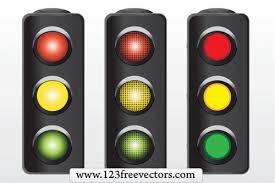One of the good things about sheltering at home is that I’m writing a lot—a whole lot. At the rate I’m going, I will have the draft of my current mystery finished by the end of July, three months earlier than I thought. Since I have few distractions, I’m able to work on it every day and quadruple my word count. And since I’m staying with the story, it’s fresh in my mind, and I don’t have to spend time rereading and going back and checking on what happened when. I always make side notes to organize what I’ve written. This can take time and cause me to lose track of my train of thought. A few weeks ago, I tried something new that allows me to continue writing. I started color-coding—adding specific colors to text—so I don’t have to rely on side notes:
Blue means what really happened.
Green means something might have to be deleted or moved.
Red means I might need to elaborate later or reword something that doesn’t quite work or question the direction I’m going.
Purple is used whenever I mention time.
Yellow is used when the protagonist summarizes what’s happened thus far within a conversion with others, or one going on in her head.
The black font in bold means I need to remember this clue, red herring, or fact that will come into play later.
Blue text example:
“I have no idea where George took off to,” Jenny said. “I haven’t seen him since the last break-in.” (Jenny is lying. She knows George is hiding out in his lake house. She brings him food and updates every day.)
Green text example:
“Speaking of that. We should phone the office to find out how Billy is doing with the Lawrence Nash case.”
“If there is a Lawrence Nash case,” Dixon said.
I might decide to delete the mention of the Nash case altogether.
Red text example:
“Don’t worry. They won’t find her. She’ll be in the Gulf by now.”
I might have to elaborate on this later and add more details.
Purple text any mention of time:
Or, he left town on Tuesday, or I arrived in New Orleans at 8:00 this morning.
Yellow text recapping events:
Flora Threadgill came to see Rip two days ago about the disturbances of her husband’s grave. He wasn’t interested in the case, but she insisted. All it took was a few quick visits to the cemetery to earn Rip threatening phone calls. When the caller threatened to harm Betsy, Rip took off for a couple of days, leaving Betsy behind to tend to the office. Not too smart in my book. I made a note to ask Rip.
Bold text of essential facts:
He said Frank started coming in a few weeks ago, almost every day, but not lately. He’d also noticed Flora in the neighborhood, but she never came in. He said she went into Marie LaVeau’s a few times for voodoo supplies.
When you’re on a writing roll, you don’t want to slow down and take notes until you’re finished for the day. Then you go back and check your color codes and make notes. The next day, all you have to do is review your notes, and the writing begins again—quickly.



Kathleen,
Color coding seems original and useful. Thanks for the tip.
I love the idea of color-coding. I often have my creative writing students color-code certain aspects of their writing , so they can see at a glance what they have enough or too much of–for example, figures of speech, positive connotations, negative connotations, description, narrative, dialogue tags, sentence types, etc. What you’ve described seems particularly useful for revisions. Thanks for sharing.